Abstract
1. The influence of repeatedly raising the body temperature by radiant heat to a level at which acclimatization to heat is normally acquired was investigated in two series of experiments, the first without the subjects sweating, the second with sweating.
2. In a second investigation local sweat-gland activity was induced by drug injections on successive days without raising the body temperature.
3. These experiments show that the increased sweating capacity characteristic of acclimatization to heat is a result of sweat-gland activity and does not appear to be induced by or to depend on an elevated body temperature.
4. Secretory activity results in a loss of glycogen from sweat-gland cells on the first day of heat exposure but not after the glands have been `trained' by acclimatization to heat.
5. The state of acclimatization has no influence on the threshold concentration of acetylcholine required to elicit sweating when injected intradermally.
Full text
PDF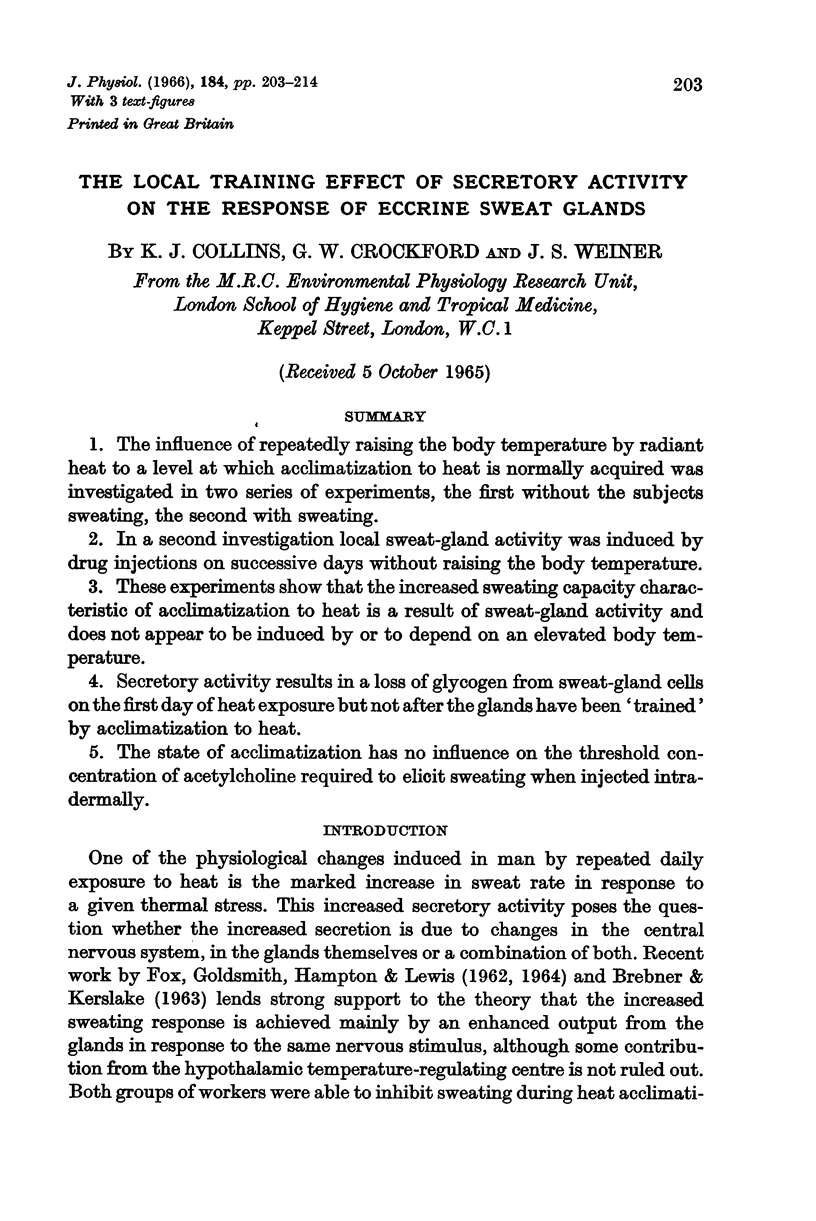
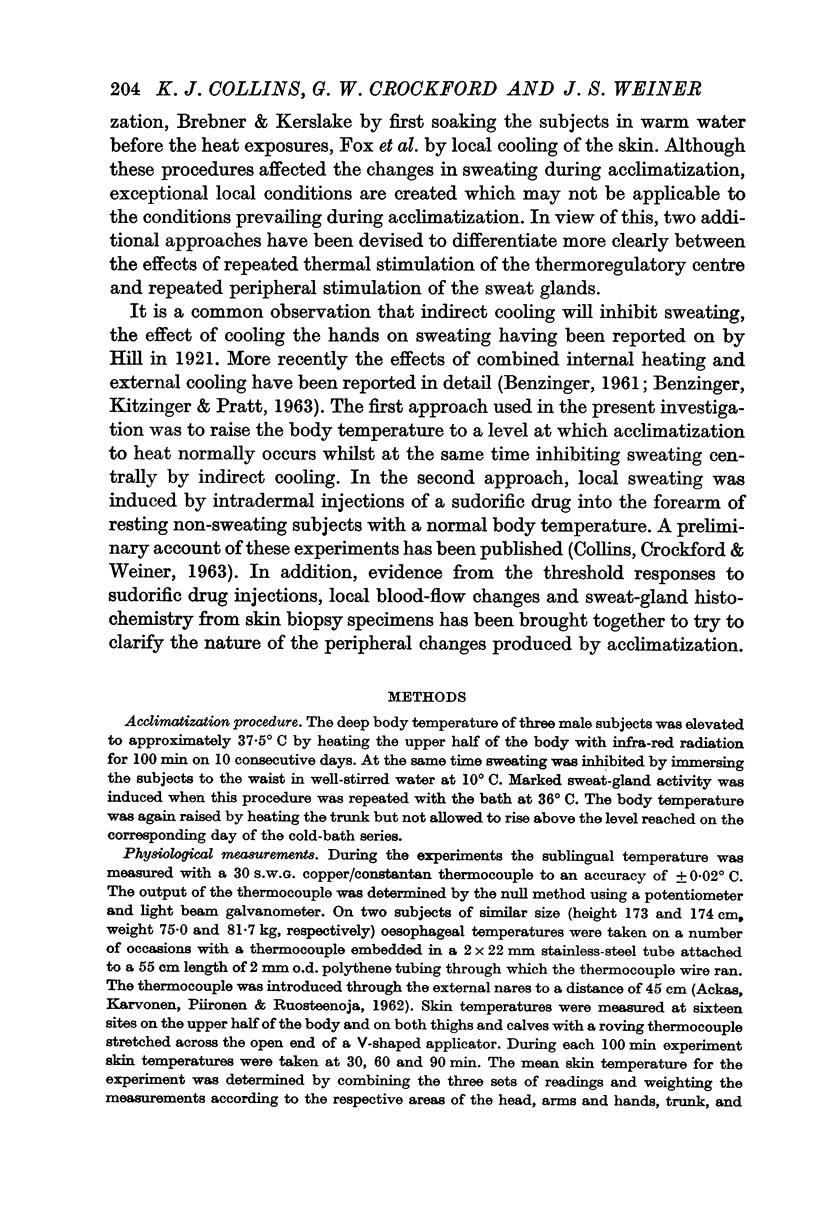
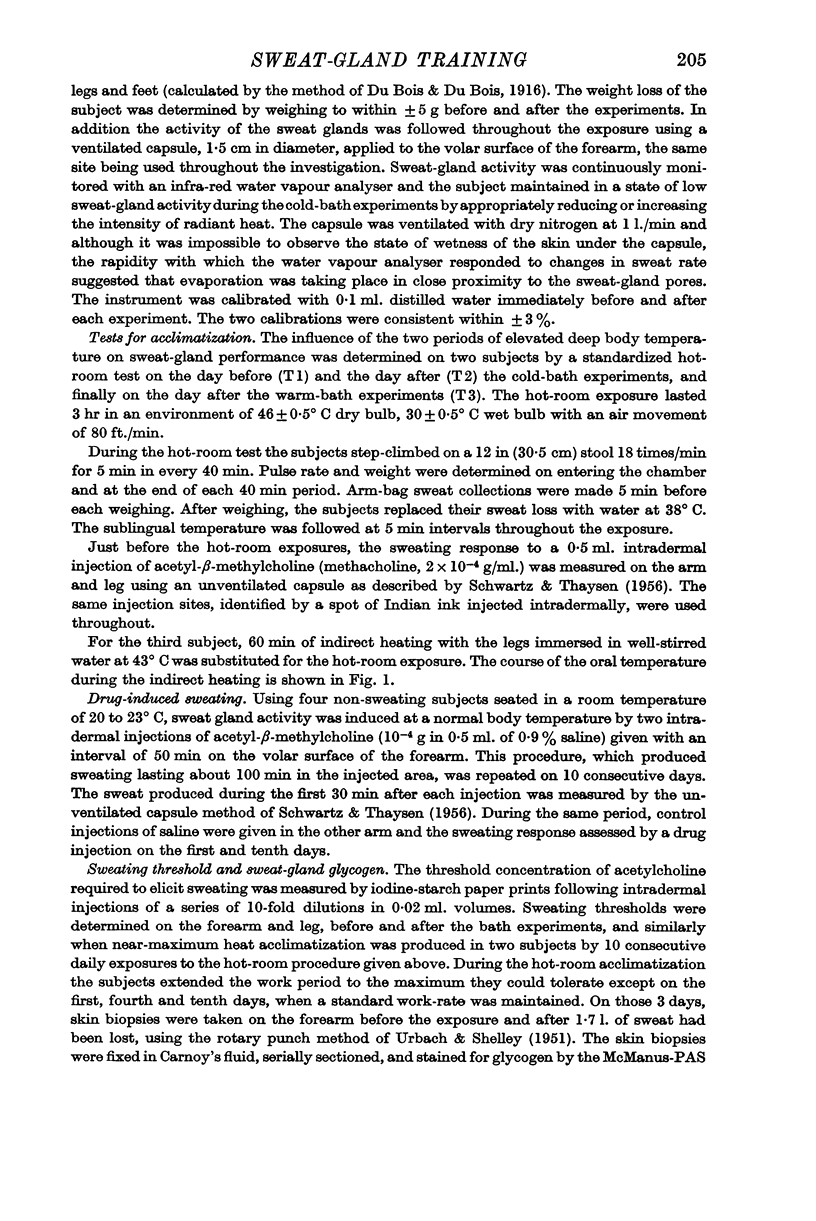
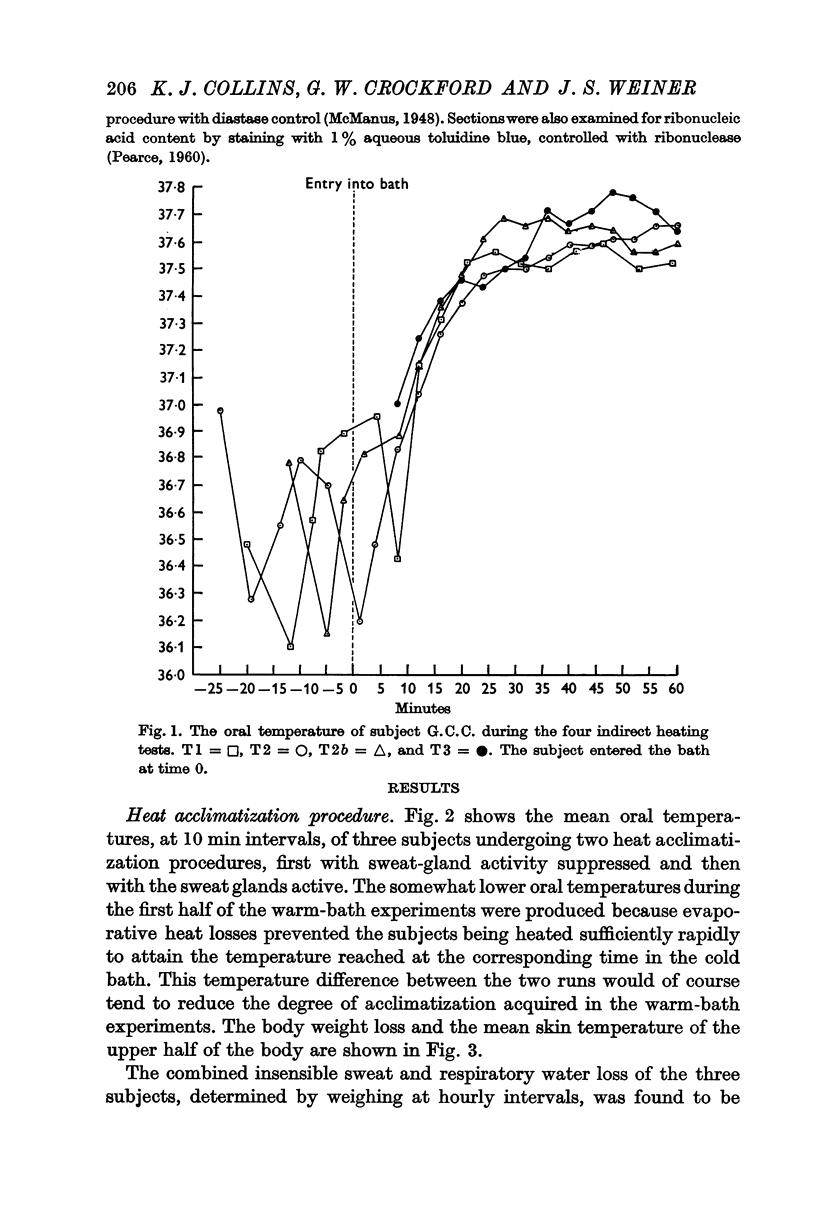
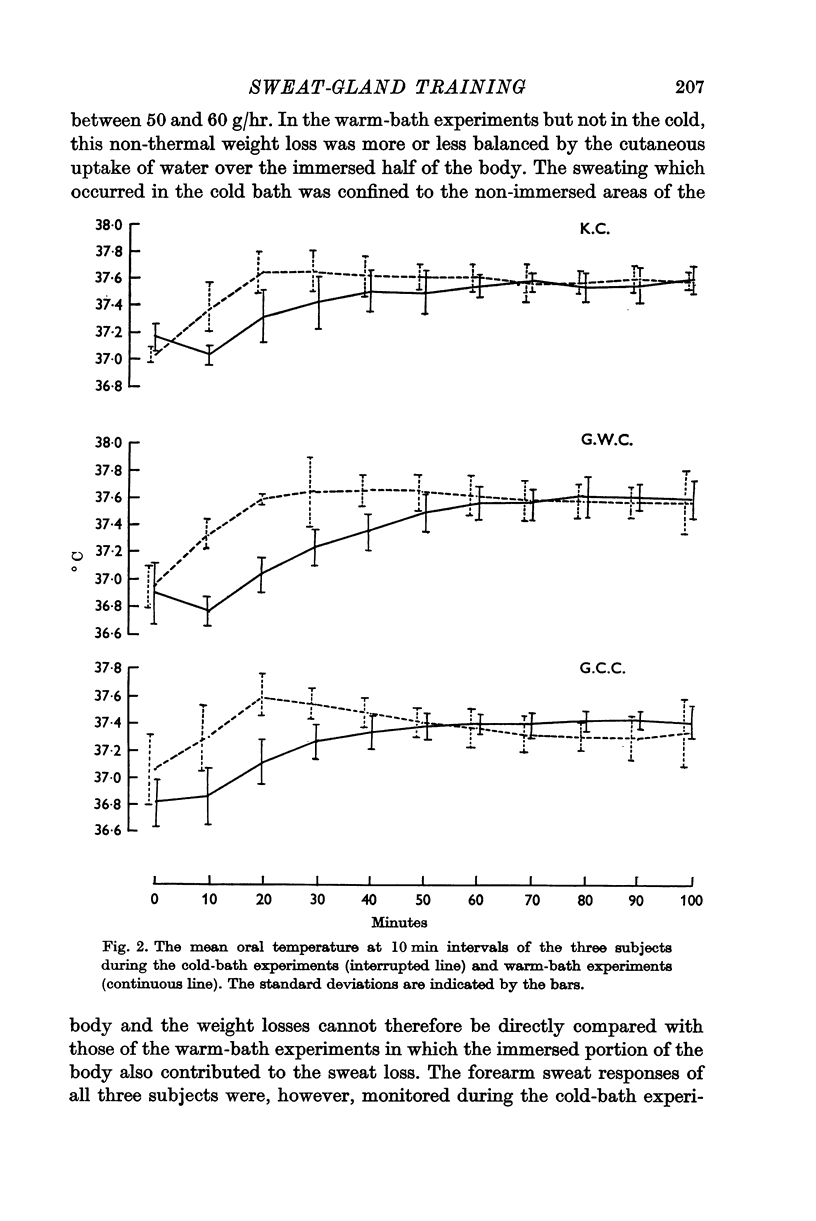
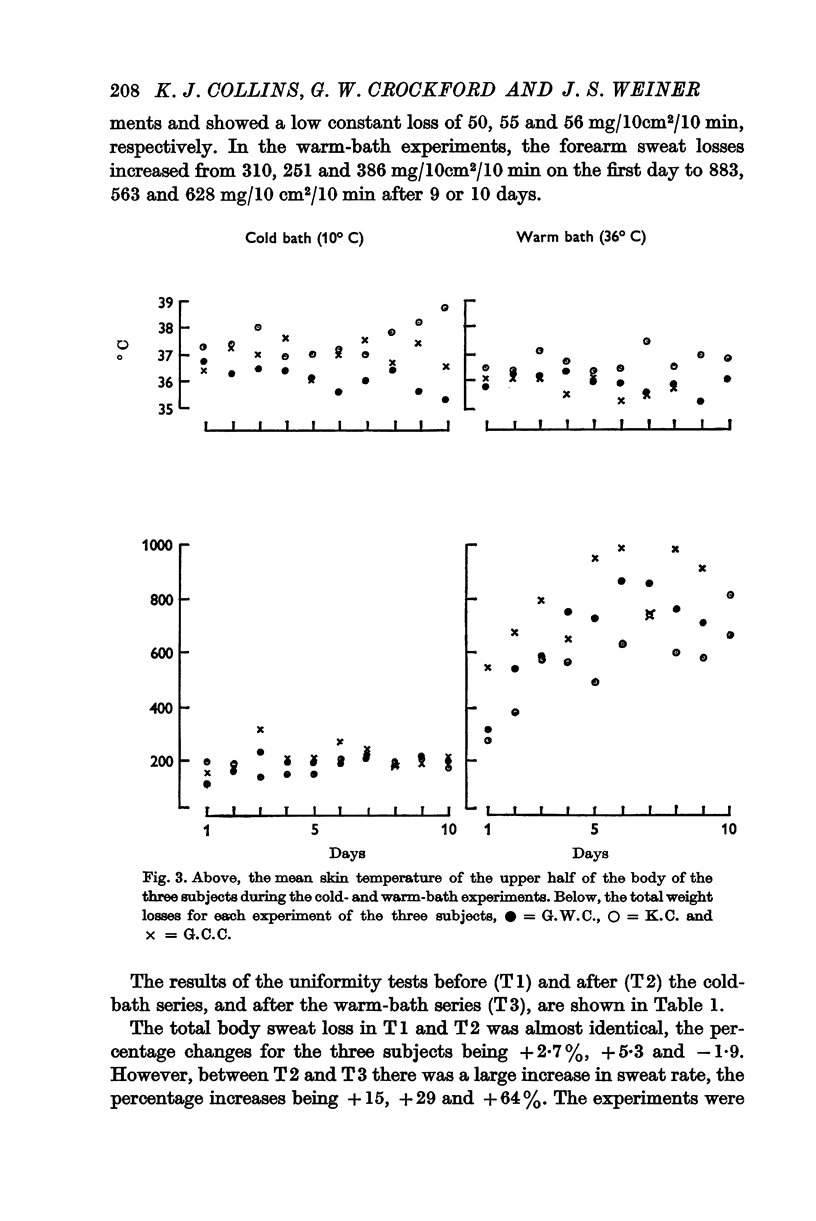
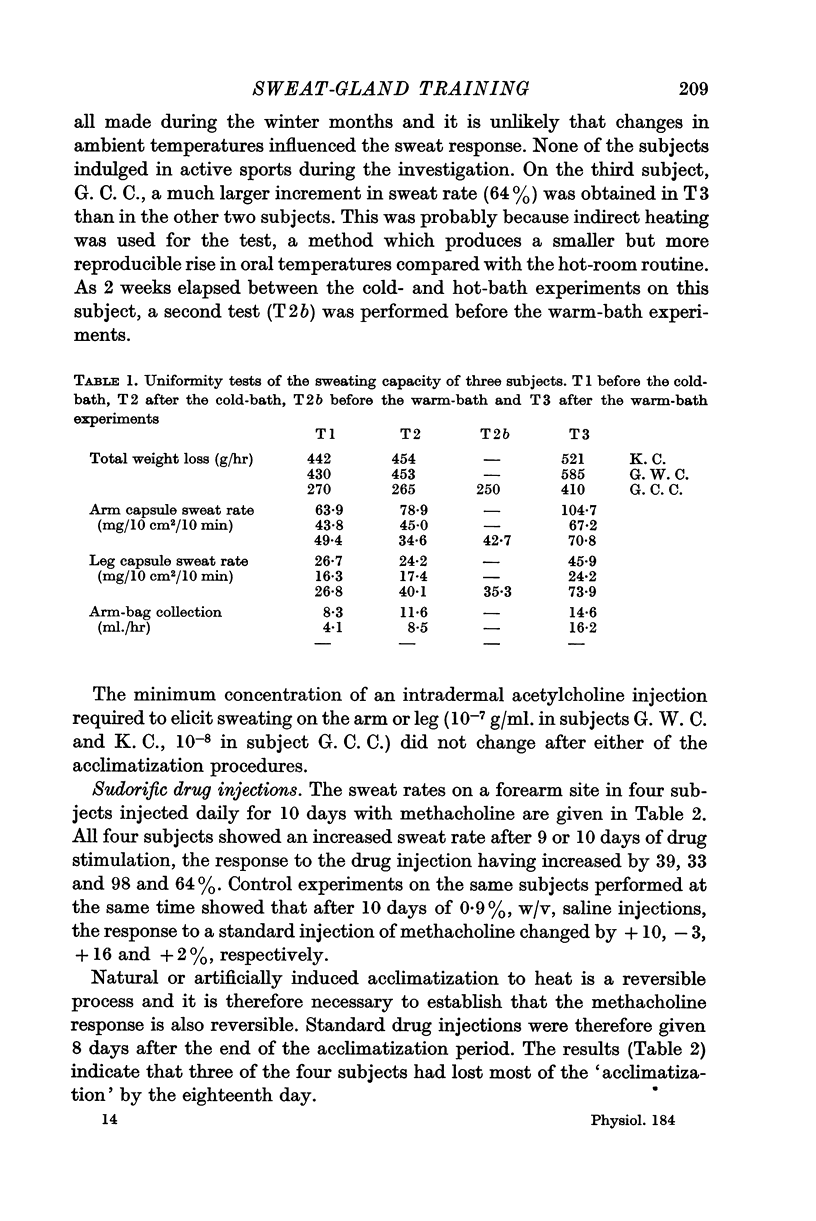
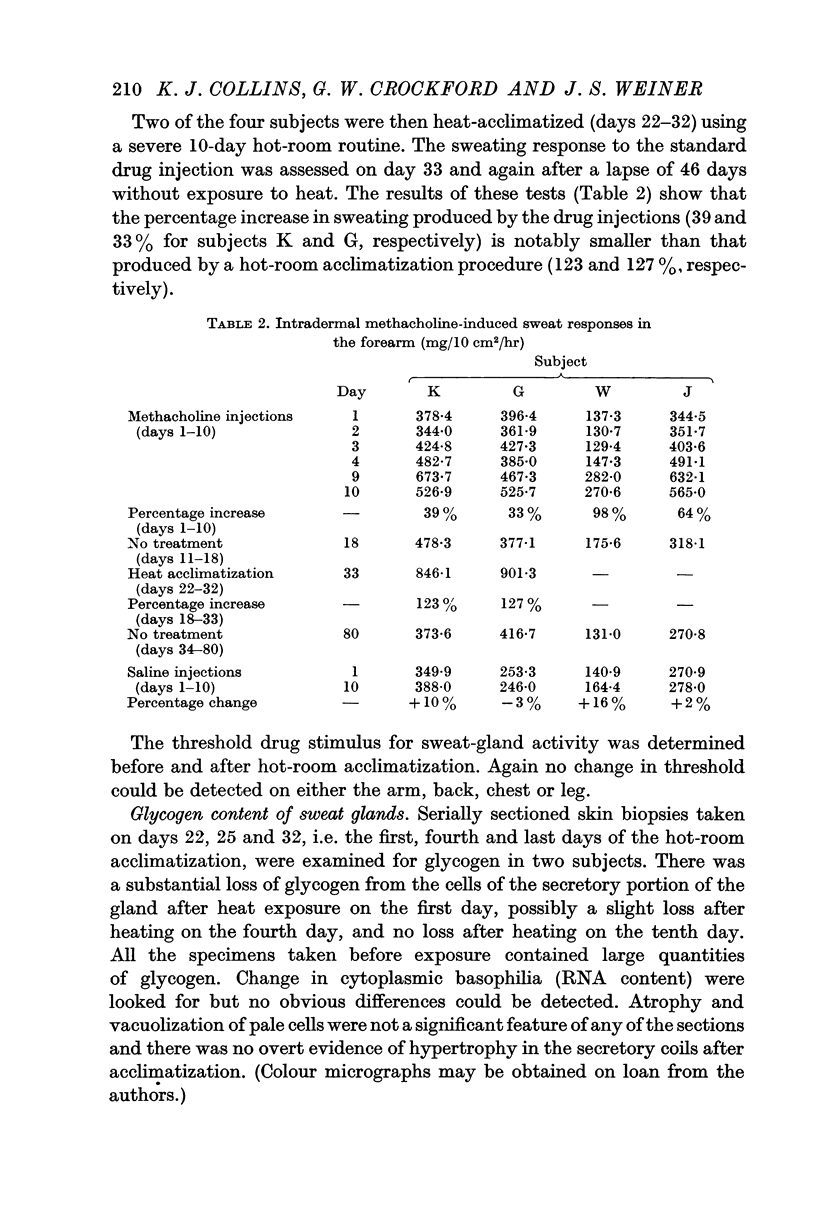
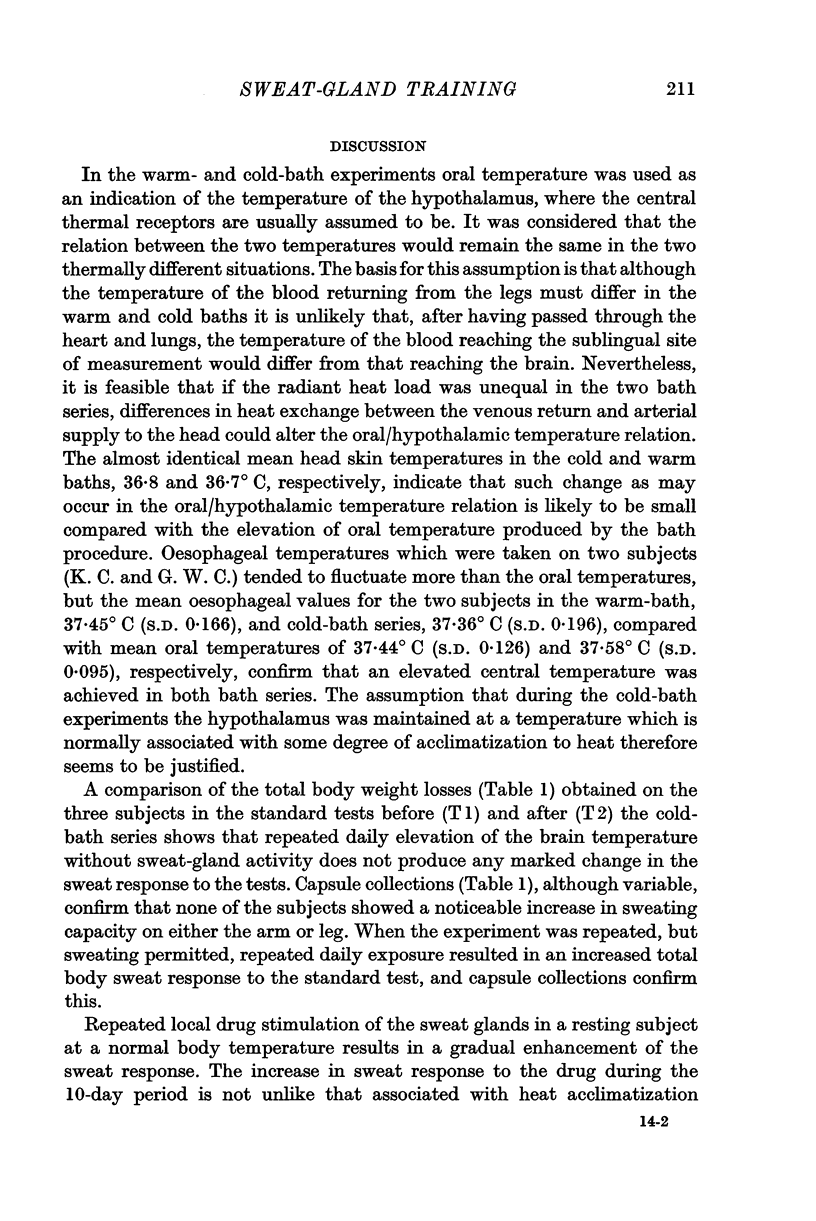
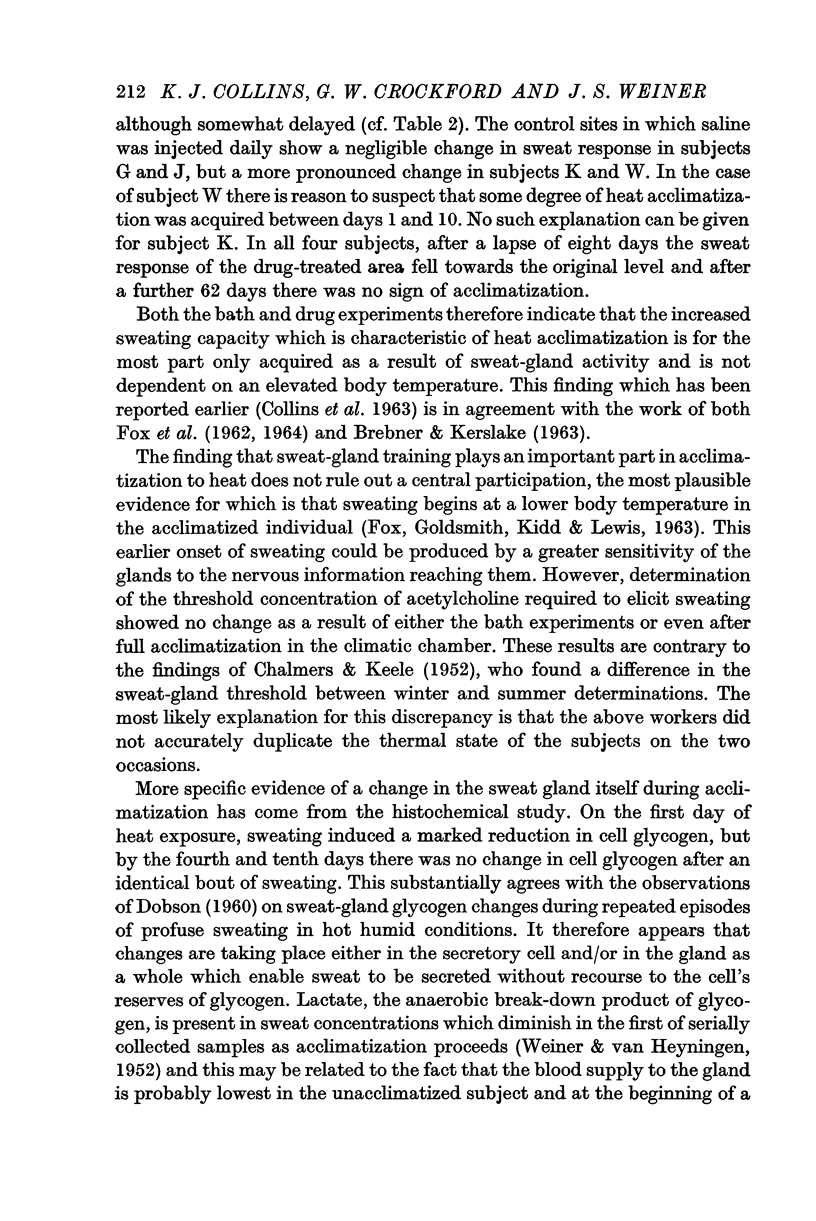
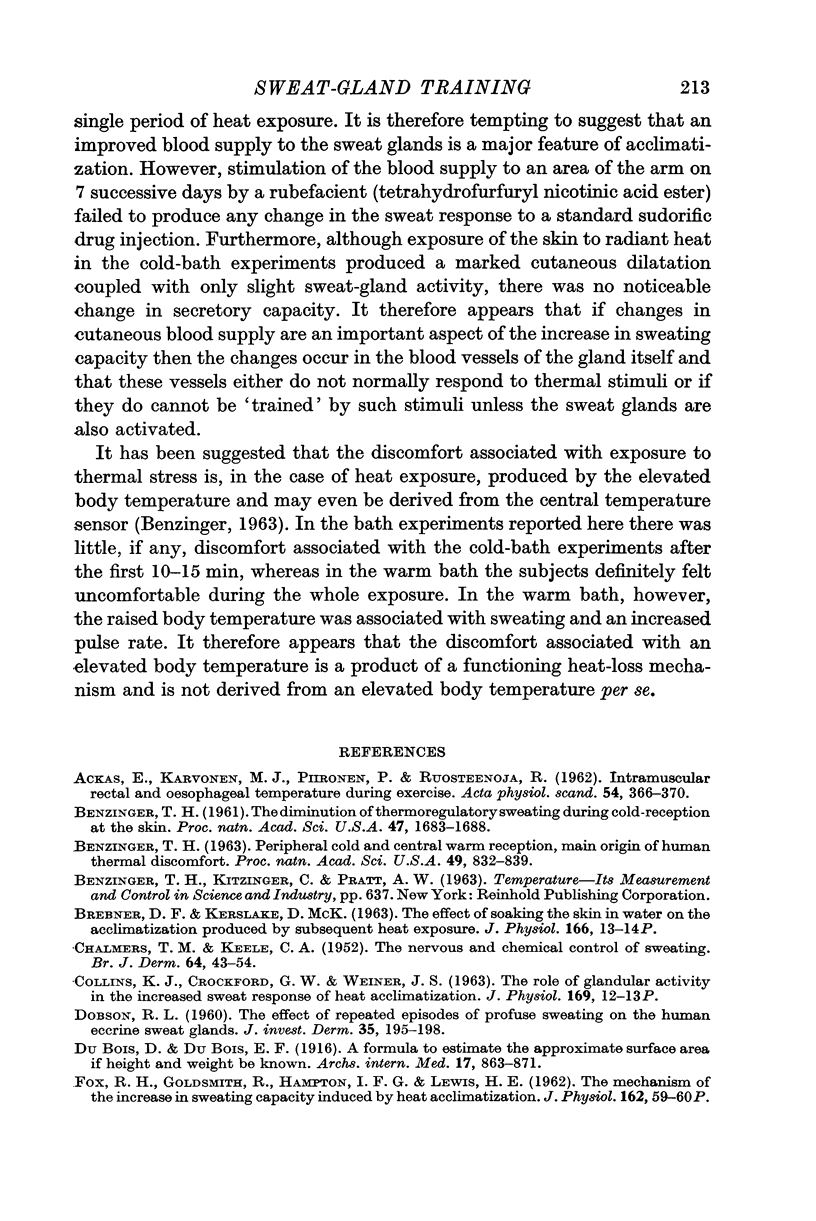
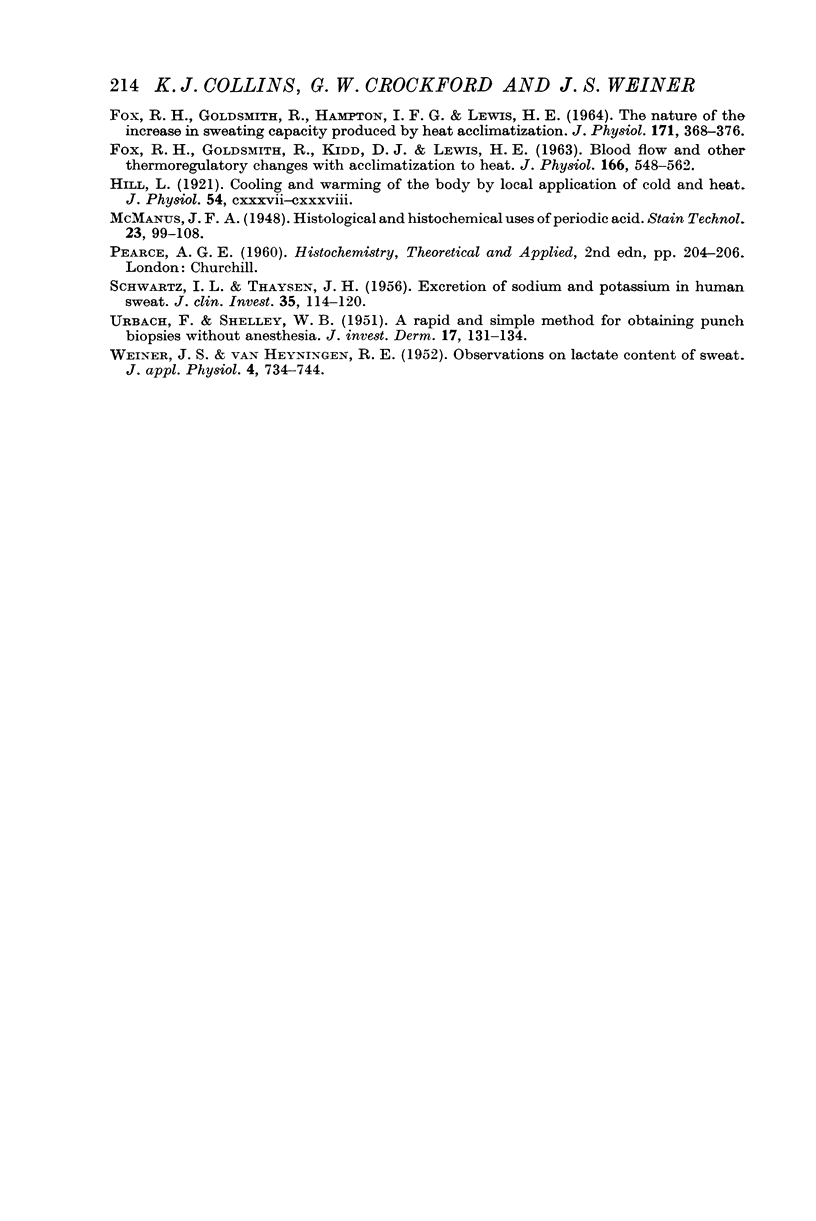
Selected References
These references are in PubMed. This may not be the complete list of references from this article.
- BENZINGER T. H. Peripheral cold- and central warm-reception, main origins of human thermal discomfort. Proc Natl Acad Sci U S A. 1963 Jun;49:832–839. doi: 10.1073/pnas.49.6.832. [DOI] [PMC free article] [PubMed] [Google Scholar]
- BENZINGER T. H. The diminution of thermoregulatory sweating during cold-reception at the skin. Proc Natl Acad Sci U S A. 1961 Oct 15;47:1683–1688. doi: 10.1073/pnas.47.10.1683. [DOI] [PMC free article] [PubMed] [Google Scholar]
- CHALMERS T. M., KEELE C. A. The nervous and chemical control of sweating. Br J Dermatol. 1952 Feb;64(2):43–54. doi: 10.1111/j.1365-2133.1952.tb16160.x. [DOI] [PubMed] [Google Scholar]
- DOBSON R. L. The effect of repeated episodes of profuse sweating on the human eccrine sweat glands. J Invest Dermatol. 1960 Sep;35:195–198. [PubMed] [Google Scholar]
- FOX R. H., GOLDSMITH R., HAMPTON I. F., LEWIS H. E. THE NATURE OF THE INCREASE IN SWEATING CAPACITY PRODUCED BY HEAT ACCLIMATIZATION. J Physiol. 1964 Jun;171:368–376. doi: 10.1113/jphysiol.1964.sp007382. [DOI] [PMC free article] [PubMed] [Google Scholar]
- FOX R. H., GOLDSMITH R., KIDD D. J., LEWIS H. E. Blood flow and other thermoregulatory changes with acclimatization to heat. J Physiol. 1963 May;166:548–562. doi: 10.1113/jphysiol.1963.sp007122. [DOI] [PMC free article] [PubMed] [Google Scholar]
- SCHWARTZ I. L., THAYSEN J. H. Excretion of sodium and potassium in human sweat. J Clin Invest. 1956 Jan;35(1):114–120. doi: 10.1172/JCI103245. [DOI] [PMC free article] [PubMed] [Google Scholar]
- URBACH F., SHELLEY W. B. A rapid and simple method for obtaining punch biopsies without anesthesia. J Invest Dermatol. 1951 Sep;17(3):131–134. doi: 10.1038/jid.1951.72. [DOI] [PubMed] [Google Scholar]
- WEINER J. S., VAN HEYNINGEN R. E. Observations on lactate content of sweat. J Appl Physiol. 1952 Mar;4(9):734–744. doi: 10.1152/jappl.1952.4.9.734. [DOI] [PubMed] [Google Scholar]


